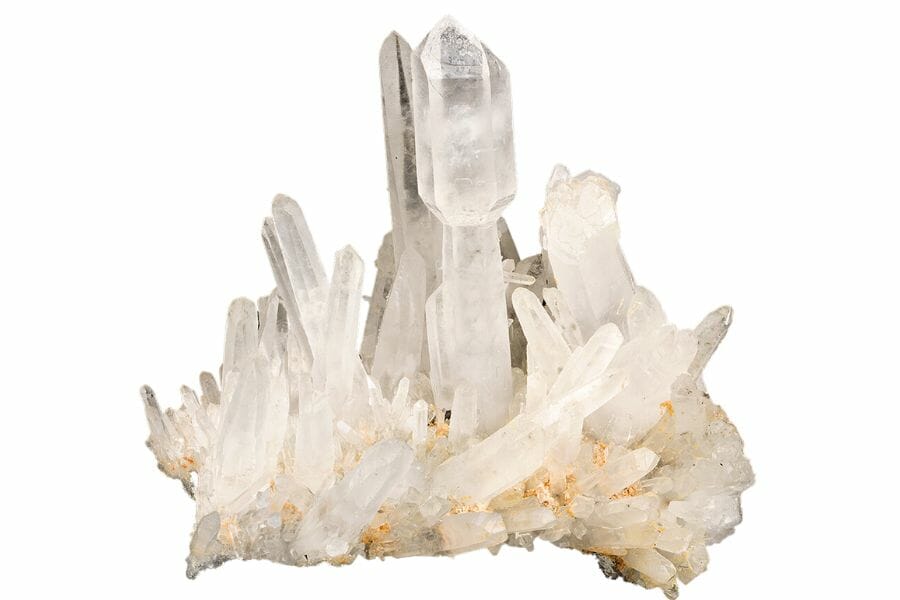Finding crystals can be a rewarding adventure, offering a unique way to explore the natural beauty and geology of the region. Whether you’re a seasoned rockhound or just getting started, knowing where to look is key to uncovering these hidden treasures.
In this state, a variety of locations provide opportunities to discover different types of crystals. From rocky outcrops in the mountains to stream beds that carry sparkling surprises, each area offers its own unique finds for those willing to search.
We can help you get started with some places you can explore for crystals below!
Crystals you can find in the US
The United States offers a wide range of crystals that reflect its diverse geology. From vibrant gems to more subtle mineral formations, there’s something to discover in nearly every region.
Calcite
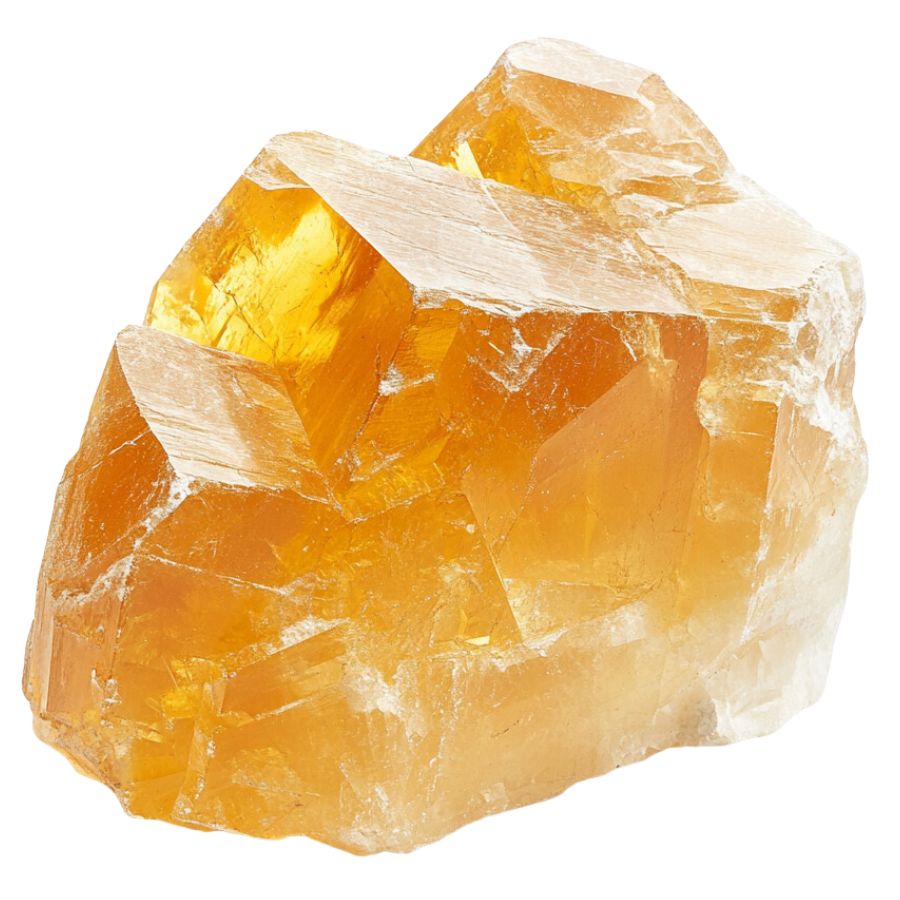
With a variety of forms and a unique property of double refraction, calcite allows objects viewed through the crystal to appear doubled. This mineral can appear in a spectrum of colors, with pure forms typically being transparent or white.
In addition, calcite reacts vigorously with acids, which aids in distinguishing it from other minerals. It also frequently contributes to the structure of sedimentary rocks such as limestone.
Gypsum
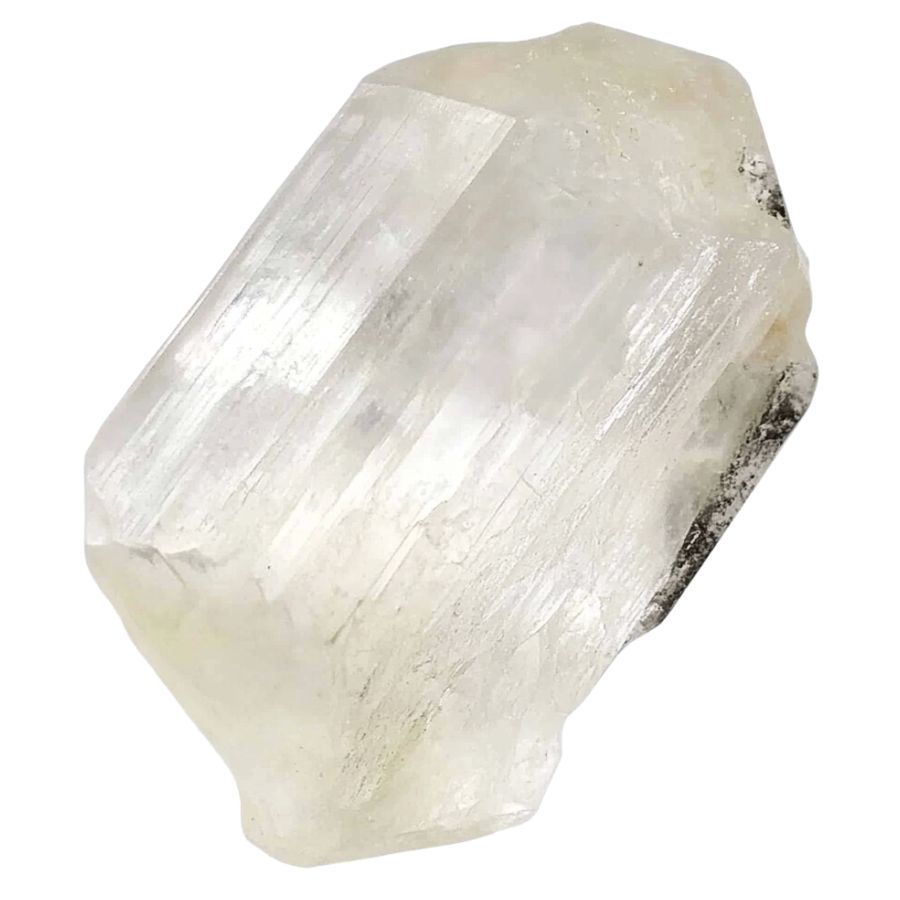
Gypsum’s notable softness allows it to be easily scratched with just a fingernail, often presenting as white or very light-colored in its pure form.
It manifests in both crystalline forms, like selenite, and massive forms such as alabaster, making it versatile in use and appearance.
Gypsum is also essential in the construction industry and is a key component in the manufacture of plaster and drywall.
Fluorite
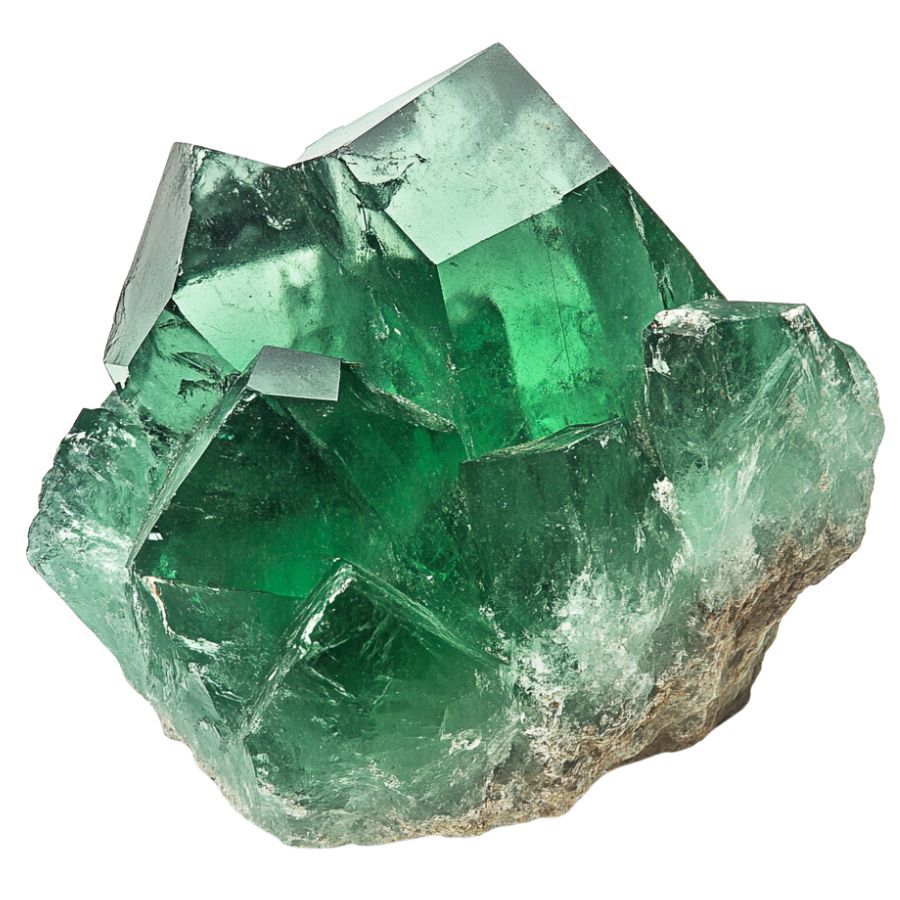
Fluorite comes in a wide range of vibrant colors, including purples, greens, blues, and yellows, and is known for forming in well-defined cubic crystals.
Beyond this, fluorite exhibits fluorescence under ultraviolet light! It can also be used in various industrial applications, including as a flux in steelmaking.
Galena
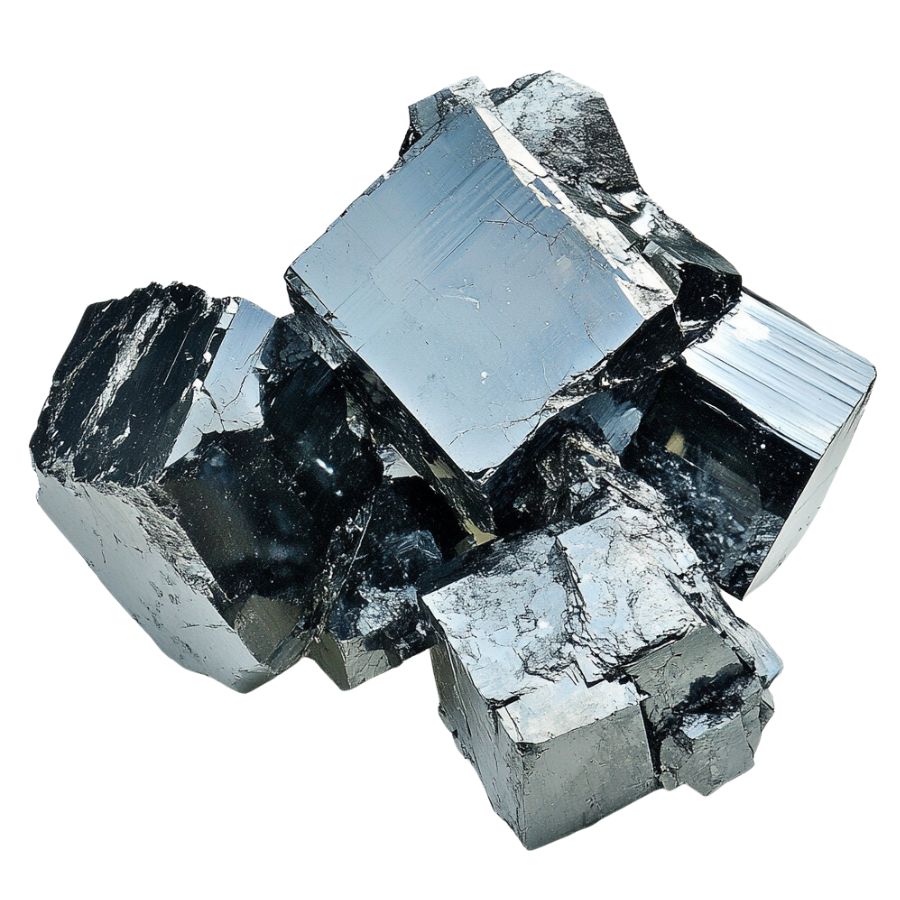
Galena distinguishes itself with a metallic luster and high density, typically found in a cube-like form. It serves as the primary ore of lead, making it important in the metal industry, while its shiny, silver color attracts collectors.
Not only does its appearance make it a subject of interest, but its weight and texture provide tangible lessons in mineral density and metallic properties. Galena also often contains traces of silver, adding to its commercial and educational value.
Corundum
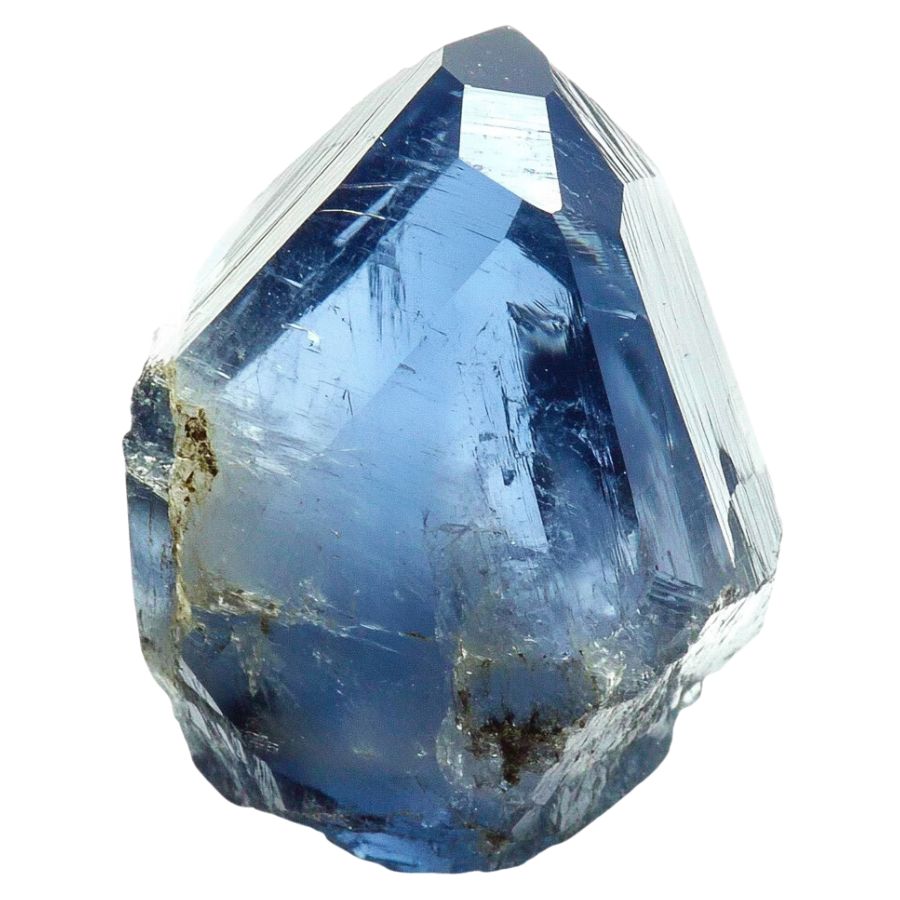
Corundum is a mineral that comes in a variety of colors, though it is typically transparent or gray. Its most famous forms are sapphires and rubies, which are prized for their vibrant blue and red hues.
The mineral is known for its remarkable hardness, ranking just below diamond on the Mohs scale. This durability makes corundum ideal for industrial abrasives and cutting tools, as well as a popular choice for fine jewelry.
Quartz
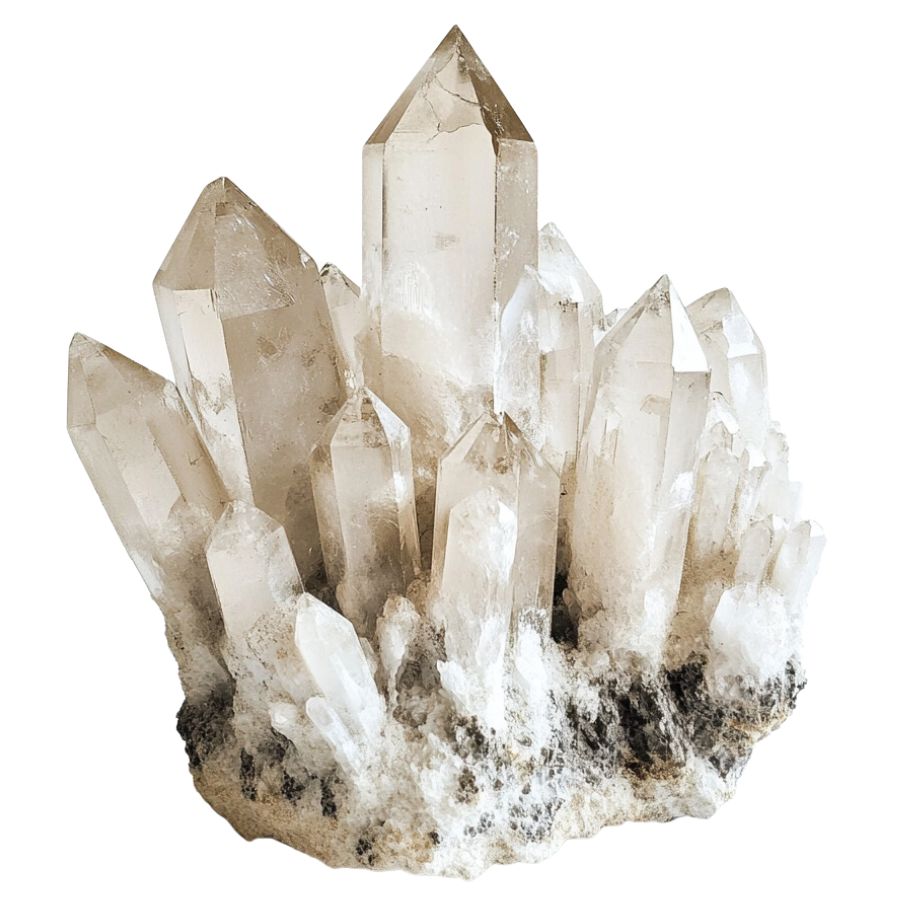
Quartz is among the most common minerals in the Earth’s crust and is prized for its durability and variety. It forms in a wide range of colors and types, from clear rock crystal to purple amethyst.
The mineral is notable for its hardness and durability, which contribute to its use in a variety of applications. Quartz is also popular in the manufacturing of electronics and watches due to its piezoelectric properties, which allow it to convert mechanical pressure into electrical energy.
Pyrite
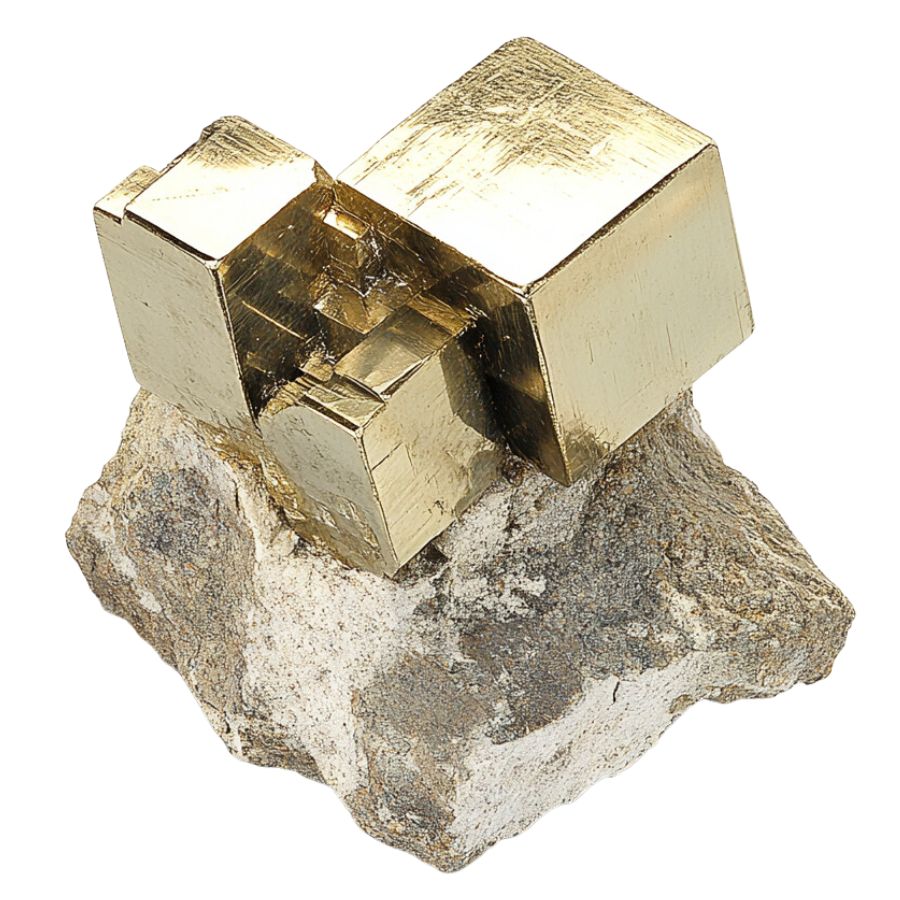
Often mistaken for gold due to its metallic luster and pale brass-yellow hue, pyrite is known colloquially as “fool’s gold.” Its characteristic cube-shaped crystal formations look man-made but are actually completely naturally formed!
Pyrite also has historical importance in producing sulfur dioxide for sulfuric acid production.
Rhodochrosite
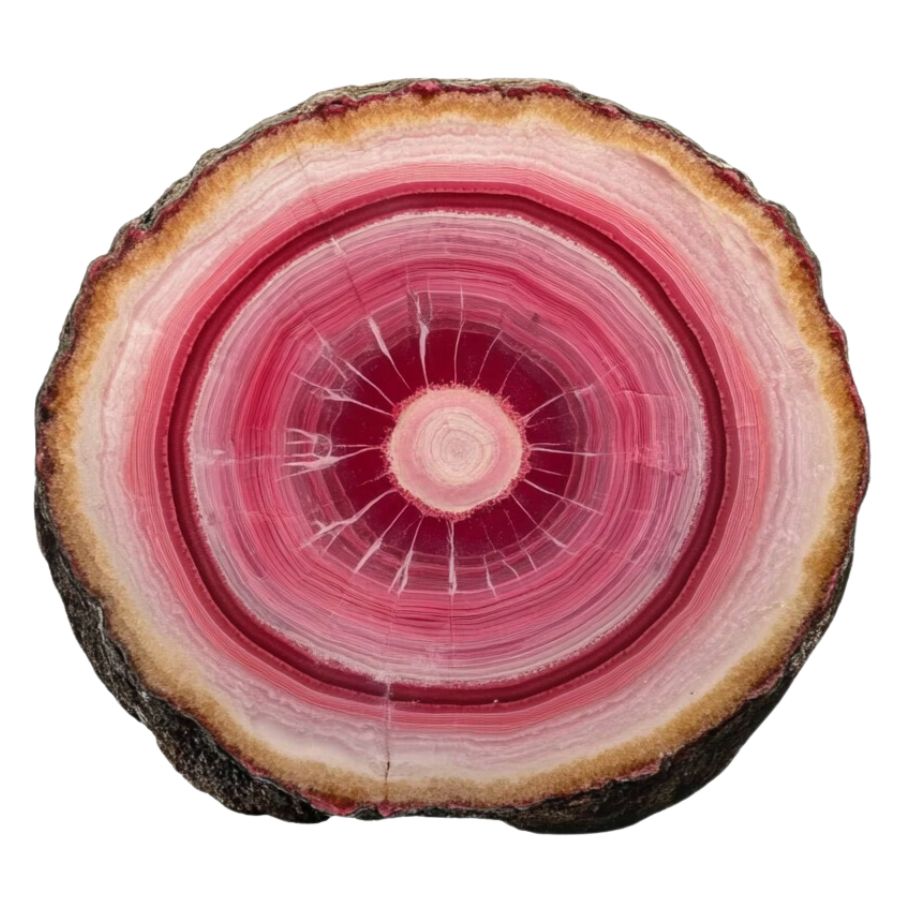
Rhodochrosite stands out with its rich pink and red hues, making it highly desirable as both a mineral specimen and a gemstone.
It typically forms in layered or stalactitic structures, with bands of colors that showcase how it grew over millions of years.
Beyond its beauty, rhodochrosite is significant as the main source of manganese, an essential element used in metal alloys.
Rhodonite
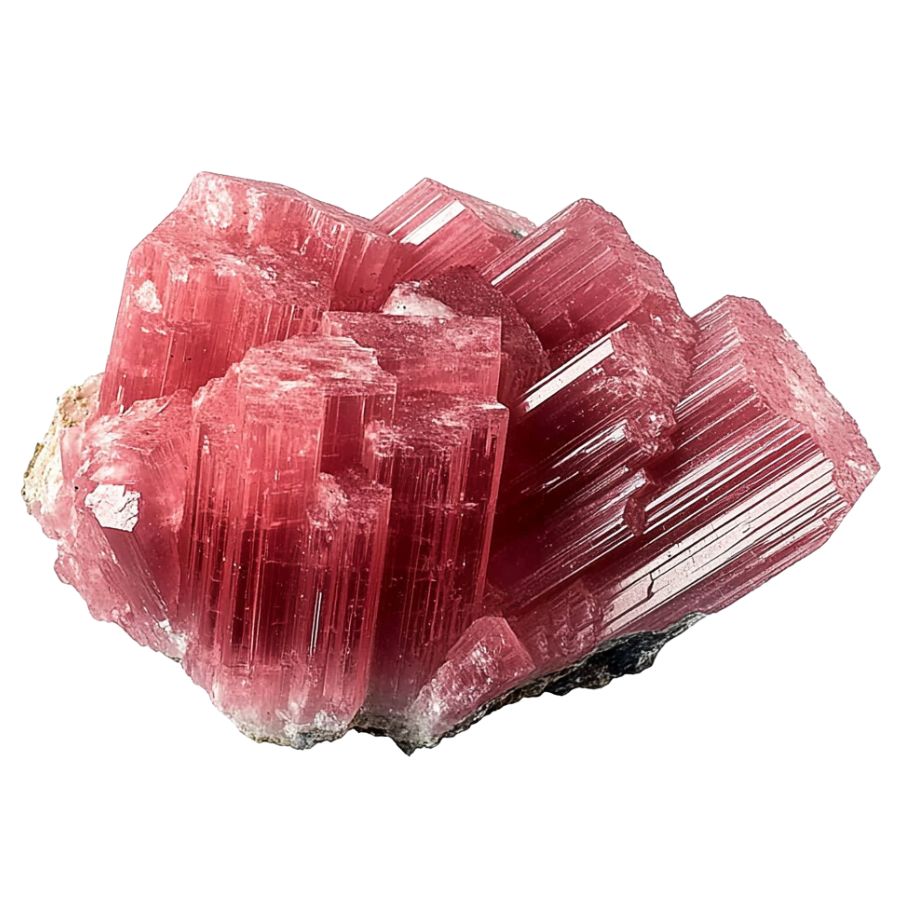
Appreciated for its deep pinks and reds, often complemented by black manganese oxide veins, rhodonite presents a dramatic appearance. It is typically found in metamorphic rocks and is used both as an ornamental stone and in jewelry.
In geology, rhodonite is significant for its role in metamorphic processes and its association with other manganese-rich minerals. It can be found in metamorphosed sedimentary rocks and is sometimes used as an indicator of the presence of manganese deposits.
Vivianite
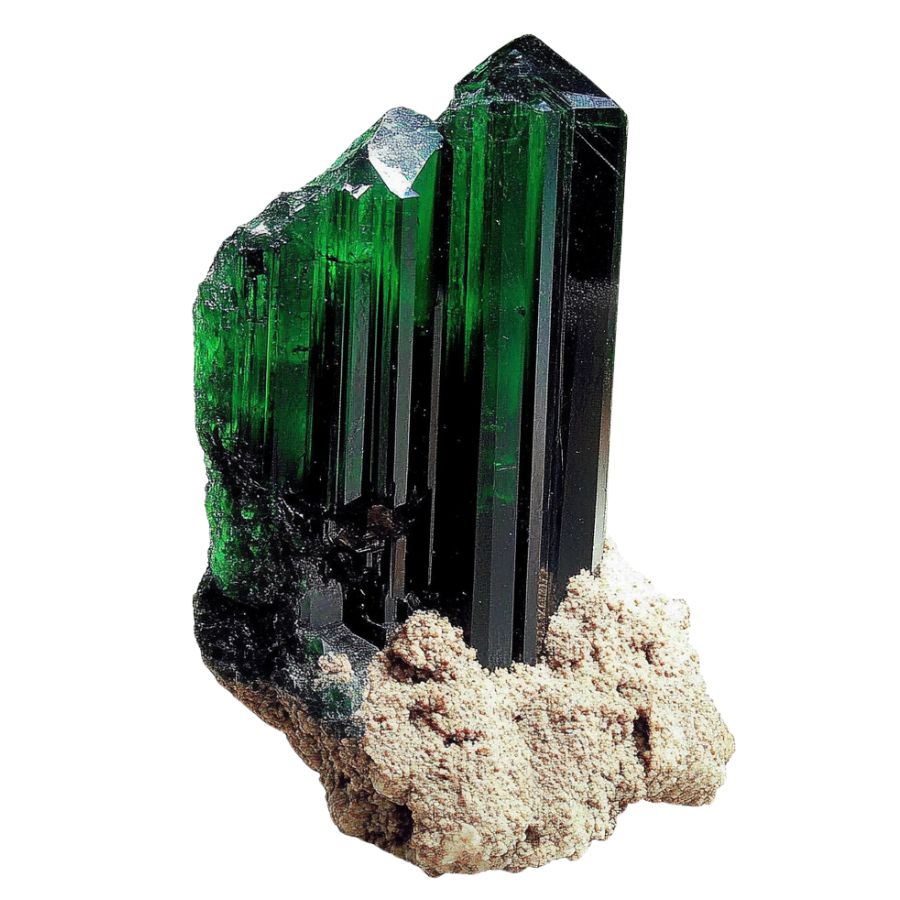
Vivianite, an iron phosphate mineral, emerges in low-oxygen environments like peat bogs or iron-rich deposits. Its striking blue to green color, which can change to a lighter shade over time due to oxidation, makes it a distinctive mineral.
Found in various geological settings, vivianite provides clues about the local conditions and the presence of phosphate deposits.
The Types of Tennessee Crystals You Can Find
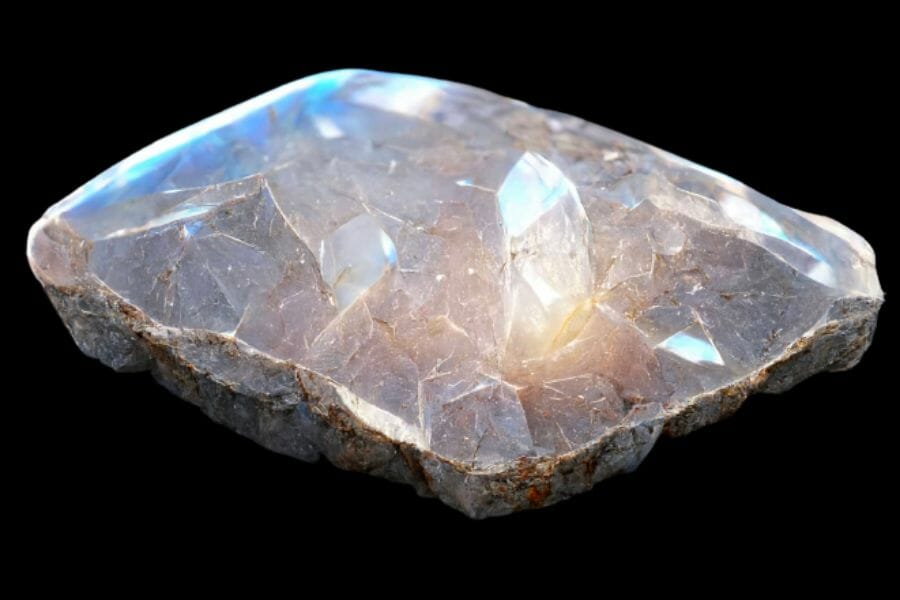
Crystals are renowned for their beauty, with a dazzling array of colors and shapes that can range from delicate and intricate to bold and striking. Tennessee boasts of a diverse variety of crystals that make it an ideal destination for anyone looking to experience the joy of finding them.
Rare crystals found in Tennessee
- Agate
- Amber
- Celestite
- Moonstone
- Onyx
- Unakite
More common crystals found here
- Azurite
- Calcite
- Chalcedony
- Chalcopyrite
- Copper
- Epidote
- Fluorite
- Galena
- Garnet
- Hematite
- Jasper
- Malachite
- Marcasite
- Pyrite
- Selenite
- Quartz
What rough crystals look like
When you’re out looking for crystals on your own it’s important to know what you’re looking for. This is what you need to look out for:
Look for exteriors like this
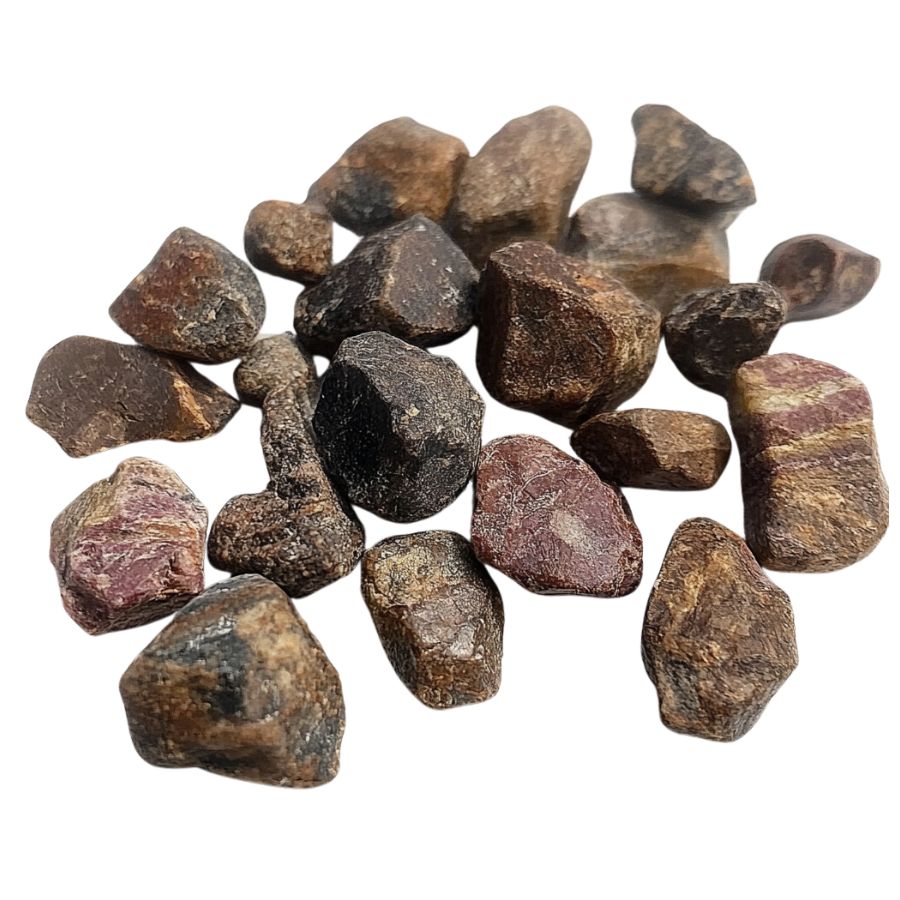
When you’re out searching for crystals in the wild, it’s essential to keep in mind that what you find won’t look like the polished stones you see in stores. One important tip is to consider what certain crystals look like in their raw, natural form.
Without the shine and smooth finish, crystals might appear rough, with jagged edges or earthy tones masking their true beauty. Understanding this can help you spot potential finds that might otherwise be overlooked.
Examine the crystal structure and shape
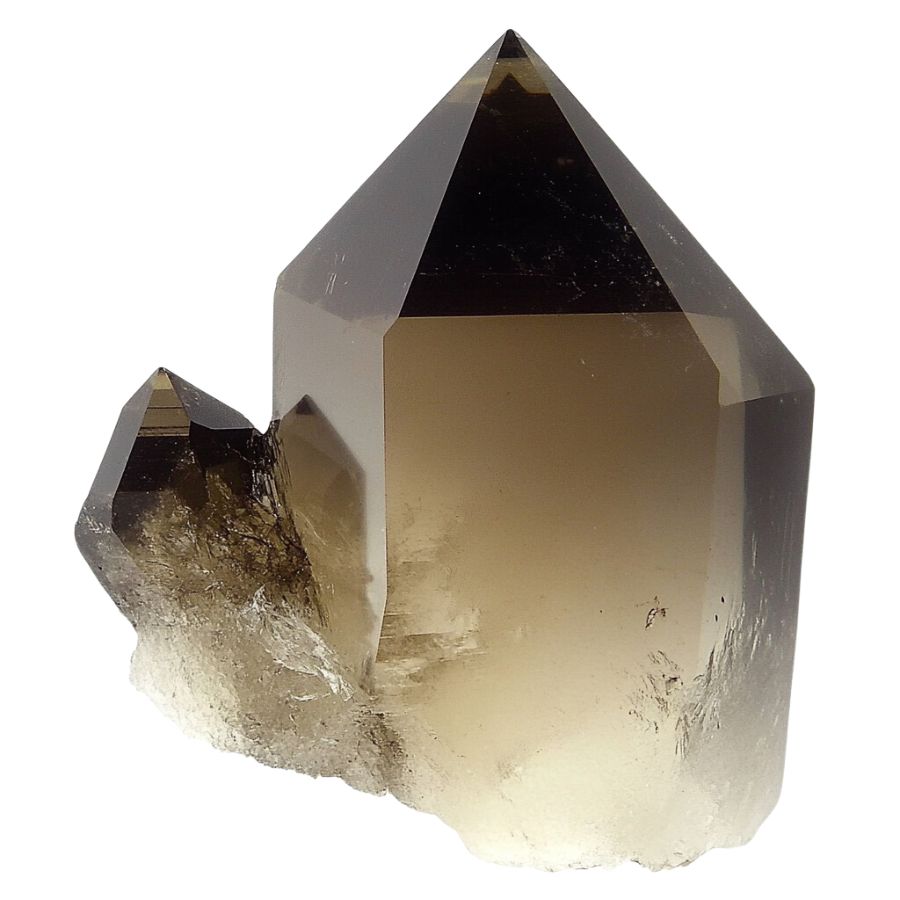
Crystals often form in specific geometric patterns that can be key to identifying them. For example, quartz is known for its hexagonal prisms, while halite typically forms cubic shapes.
By recognizing these distinct patterns, you can differentiate between various types of crystals and better understand what you’ve found.
Observe color
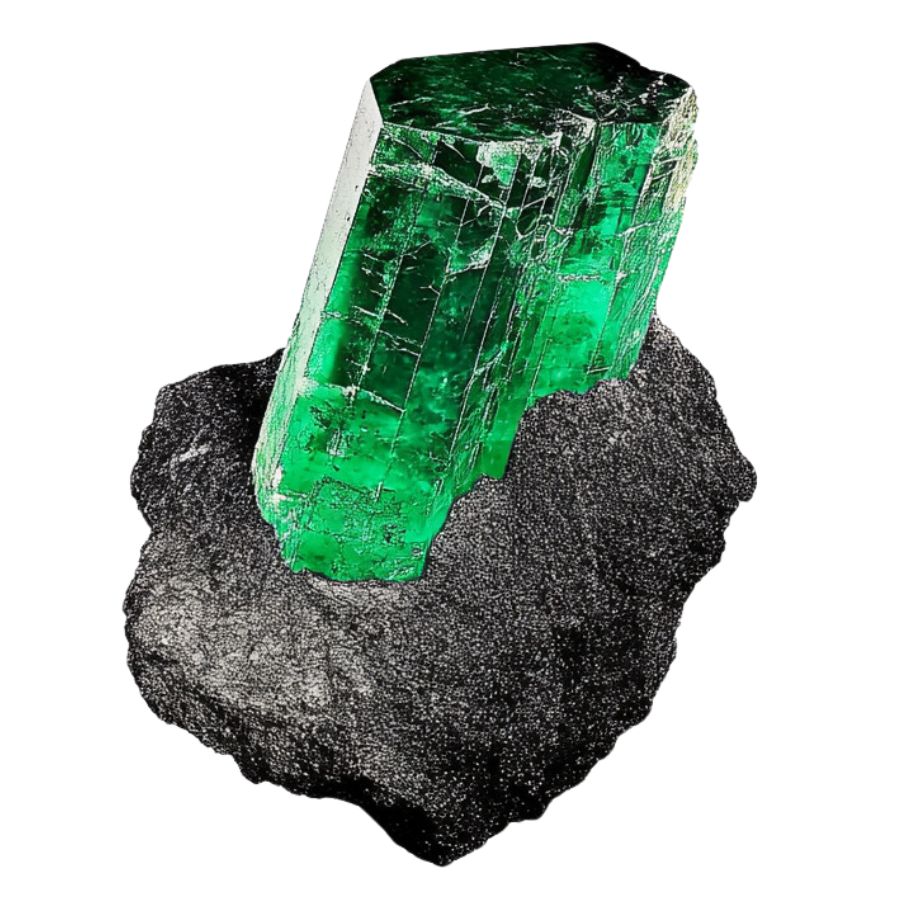
Some crystals are known for their distinct hues, like the deep purple of amethyst or the vibrant green of emerald. However, not all crystals will have strong colors; some may be clear or only slightly tinted.
Check the luster
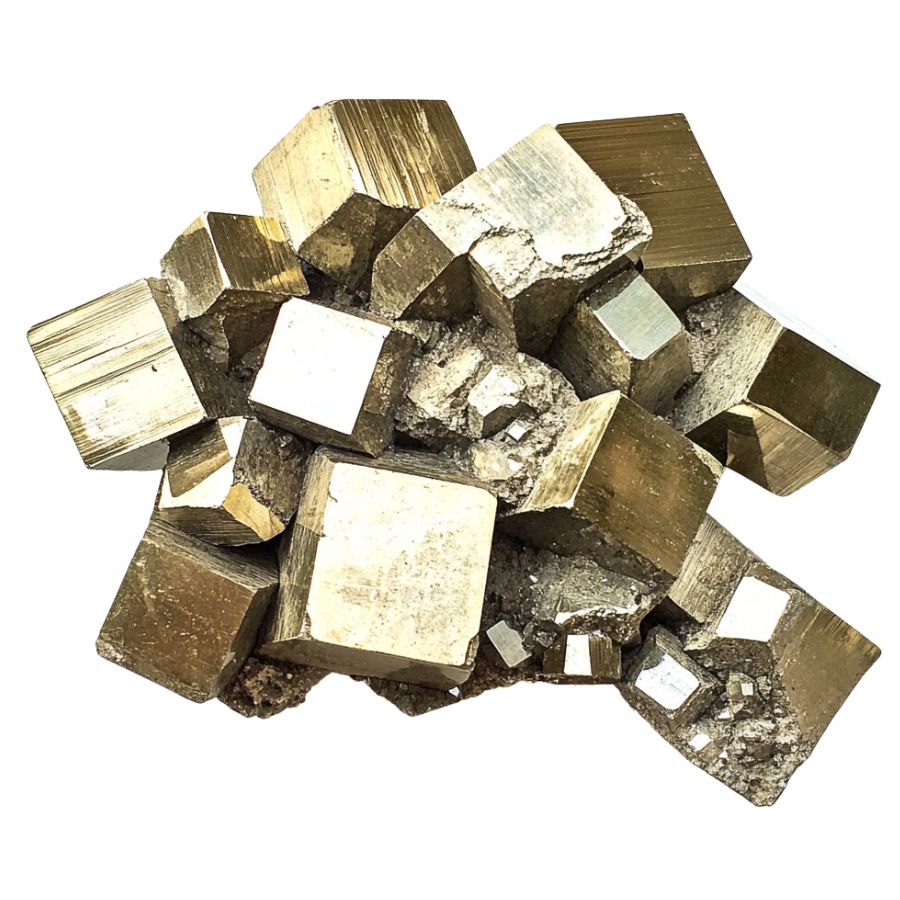
Luster refers to how a crystal’s surface interacts with light. Some crystals might have a shiny, glassy luster, while others may appear metallic or dull. This characteristic can help you determine the type of crystal you’ve found.
However, it’s important to remember that luster isn’t always obvious right away. In some cases, a crystal’s true luster will only become apparent after it’s been cleaned or polished, so keep this in mind as you examine your finds.
Evaluate the transparency
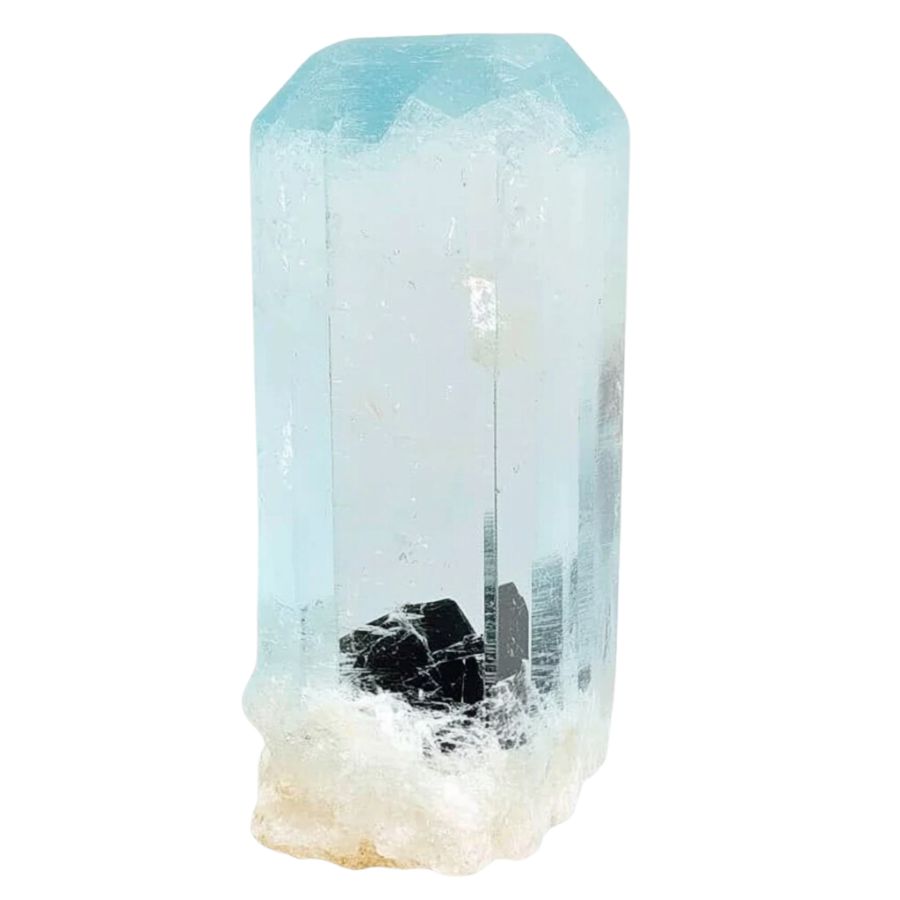
Pay close attention to how much light passes through the crystal. Some crystals are completely clear, allowing light to pass through easily, while others may be opaque and block light entirely.
You might also encounter crystals with translucent edges but opaque centers. These variations in transparency can offer valuable clues about the type of crystal you’ve found, making it easier to identify and appreciate your discovery.
A Quick Request About Collecting
Always Confirm Access and Collection Rules!
Before heading out to any of the locations on our list you need to confirm access requirements and collection rules for both public and private locations directly with the location. We haven’t personally verified every location and the access requirements and collection rules often change without notice.
Many of the locations we mention will not allow collecting but are still great places for those who love to find beautiful rocks and minerals in the wild without keeping them. We also can’t guarantee you will find anything in these locations since they are constantly changing.
Always get updated information directly from the source ahead of time to ensure responsible rockhounding. If you want even more current options it’s always a good idea to contact local rock and mineral clubs and groups
Tips on where to look
Having a better idea of where to look can greatly narrow down your search and increase your chances of finding crystals. By focusing on environments where crystals are likely to be exposed, you can spend less time searching and more time discovering.
Outcrops and Exposed Rock
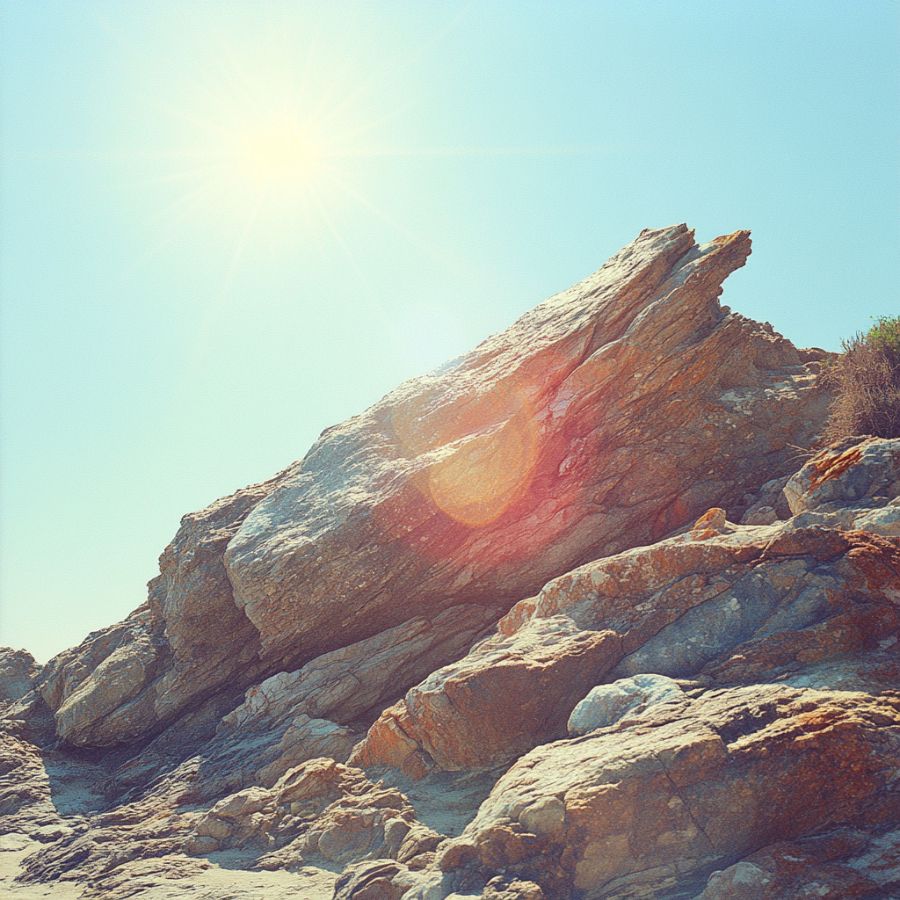
Rocky outcrops are prime locations for finding crystals and minerals. Search along the edges of outcrops, particularly where erosion has worn away the surrounding soil, revealing the rock underneath.
Pay close attention to any visible cracks, crevices, or small cavities within the outcrop, as these are often where crystals develop and can be extracted with minimal effort.
Stream Beds and Gravel Deposits
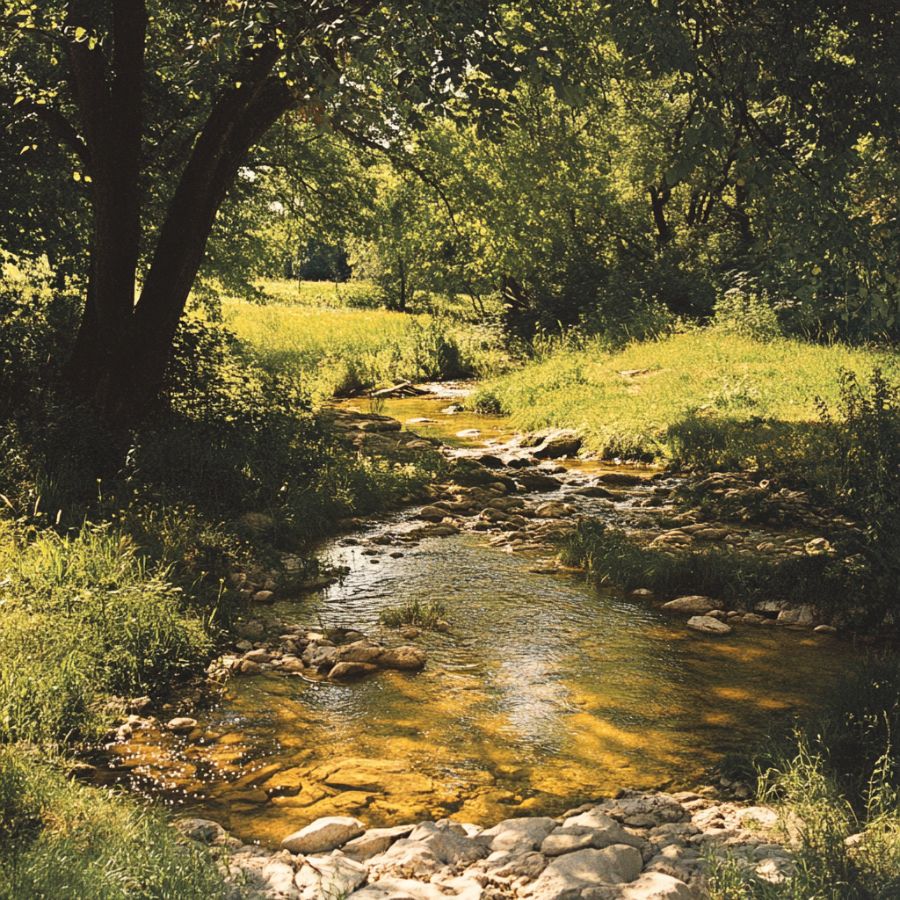
Stream beds are dynamic environments where water flow constantly shapes the landscape. Over time, water can erode rocks upstream, breaking them down and carrying mineral fragments, including crystals, downstream.
When searching in these areas, look for spots where the current has slowed, such as bends in the stream or areas behind large rocks, as these are prime locations for deposits.
Quarries and Mines
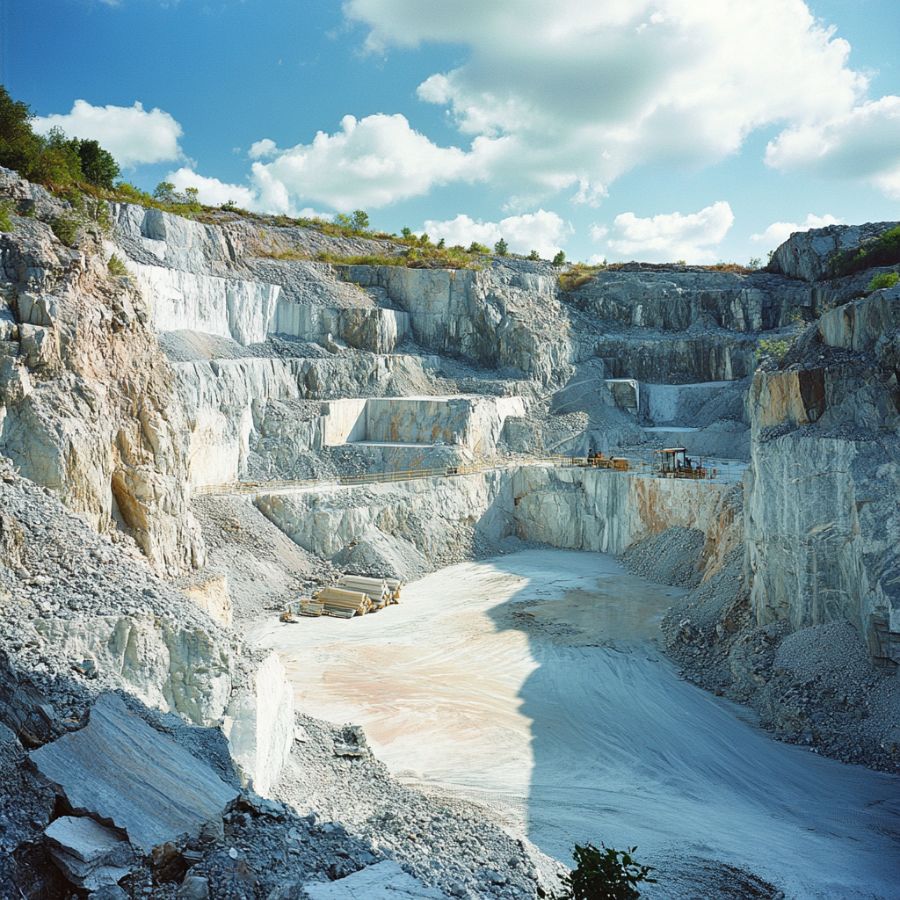
Quarries and mines are excellent places to search for crystals because they expose deep layers of rock that would otherwise be hidden beneath the surface. These sites often contain a variety of minerals and crystals that have been brought to the surface during excavation.
Pay attention to tailings piles, where waste rock is discarded, as they often contain overlooked or broken crystals. Always prioritize safety when exploring these areas and ensure that you have permission to search.
Road Cuts and Construction Sites
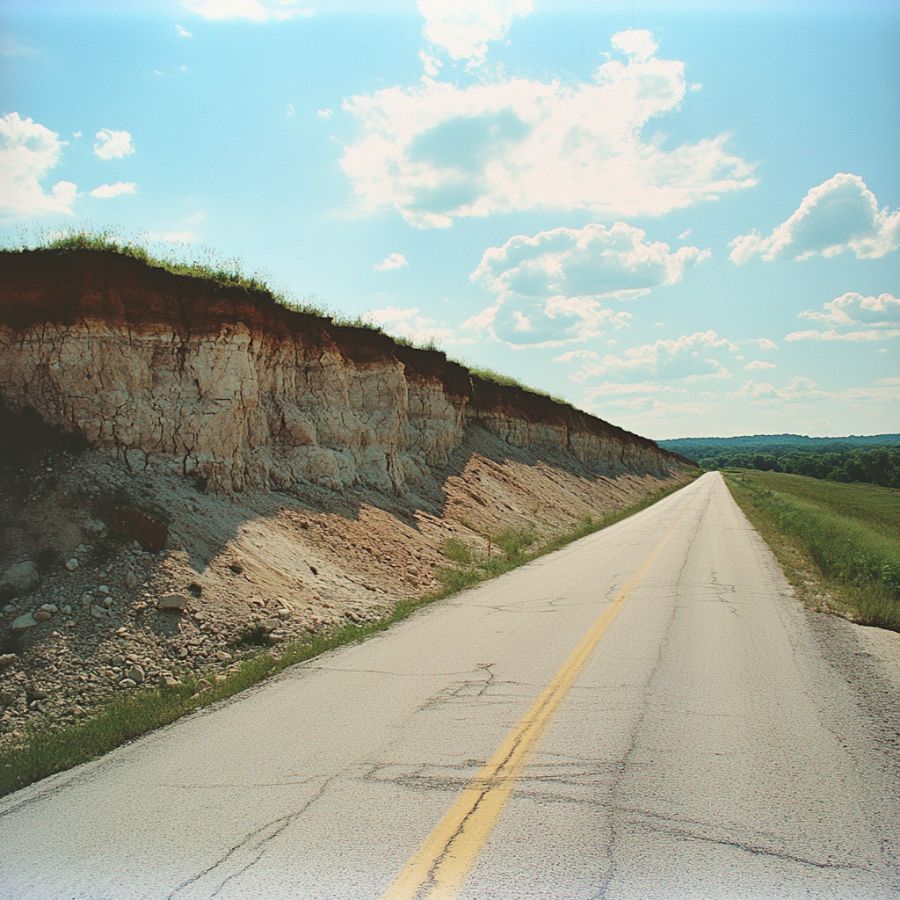
As roads are cut through hillsides or construction projects dig deep foundations, layers of rock and soil that have been undisturbed for millions of years are suddenly exposed.
Look for freshly exposed rock faces, especially where blasting has occurred, as this can create fissures or expose pockets filled with crystals. Be cautious around active construction sites, and always seek permission before exploring.
Mountainous Areas

In mountainous regions, erosion caused by wind, rain, and ice can wear away the softer rock, exposing harder crystals that have formed within. Focus on weathered and broken rock formations.
Look for scree slopes, where loose rock has accumulated at the base of cliffs. Additionally, areas near fault lines or volcanic vents are particularly promising, as they often have a higher concentration of minerals.
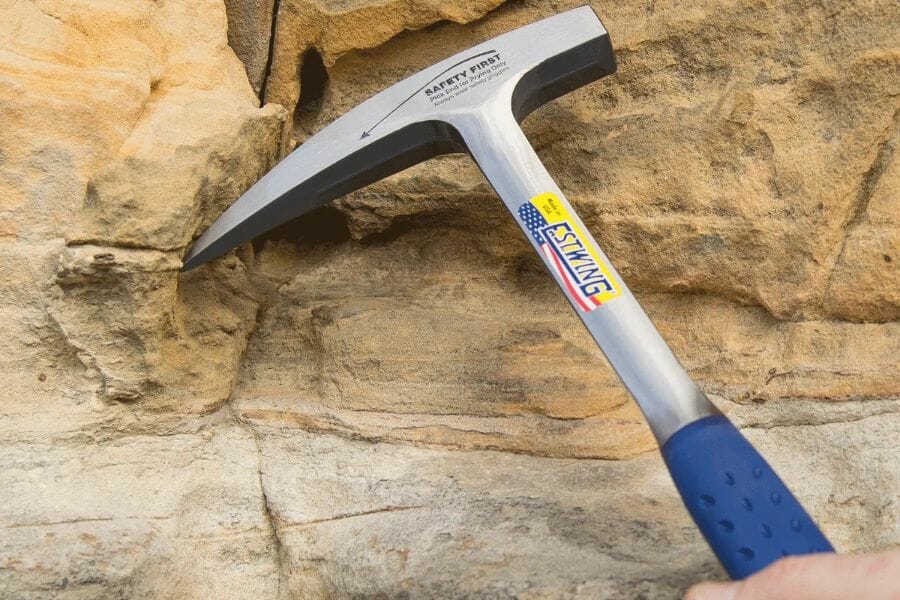
The tools every crystal hunter will need
When you're out looking for crystals having the right tools for the job is very important. You don't need a lot for most trips but there are a handful that are critical and will make your life a lot easier.
We get asked a lot about the equipment we use. Over the years we've found a handful of tools that we recommend to both new and experienced crystal miners which we outline in great detail in our complete rockhounding equipment guide. These are quality options that also happen to be relatively inexpensive.
Below are the basic tools that make your life so much easier and save you a ton of time. Check out the full guide to see everything we recommend bringing. One quick note, as an Amazon Associate I earn from qualifying purchases but we try very hard to only recommend gear we would use ourselves and often recommend brands you can't find on Amazon.
At a minimum you should have:
1 - Sturdy rock hammer: The Estwing Rock Pick is our standard
2 - Rugged chisels: Try Kendo' 3-piece Chisel Set
3 - Compact shovel: The Koleiya 28-inch shovel works well
4 - Rock screen pan: The Wazakura Soil Sieve Set fits the bill
5 - Eye protection: DeWalt Safety Glasses are cheap and comfortable
6 - Head protection: Malta's Safety Helmet has been our go-to
7 - Jewelers lens with at least 20x magnification: Jarlink's Jewelers Loop is perfect
The crystal-finding books that we use most
There are also a few books that have been extremely helpful in the search for gems. These books have great recommendations and tips:
National Audubon Society Field Guide to Rocks and Minerals: North America
Southeast Treasure Hunter's Gem & Mineral Guide
Earth Treasures: The Southeastern Quadrant
We provide links to find these tools on Amazon but some can also be found at your local hardware stores. For more recommendations check out the link to our full tool guide above.
Tennessee Crystal Mining Laws And Regulations
Collecting crystals in Tennessee is legal for as long as you comply with all local laws related to it, especially those implemented by the Tennessee Department of Environment and Conservation.
As a general rule, you need to obtain necessary permits and permission from concerned government offices as well. For private lands, make sure you get the permission of the owner before doing any serious search.
By following these local rules and regulations, you are helping make crystal hunting a sustainable activity in our state.
- The extensive local experience and understanding of our team
- Input from multiple local crystal hunters and crystal collecting groups
- The accessibility of the crystal mining locations
- Safety and potential hazards when collecting
- Private and public locations
- A desire to include locations for both experienced crystal hunters and those who are just starting out
Using these weights we think we’ve put together the best list out there for those who love finding new crystals for our collections!
The Best Locations For Crystal Mining in Tennessee
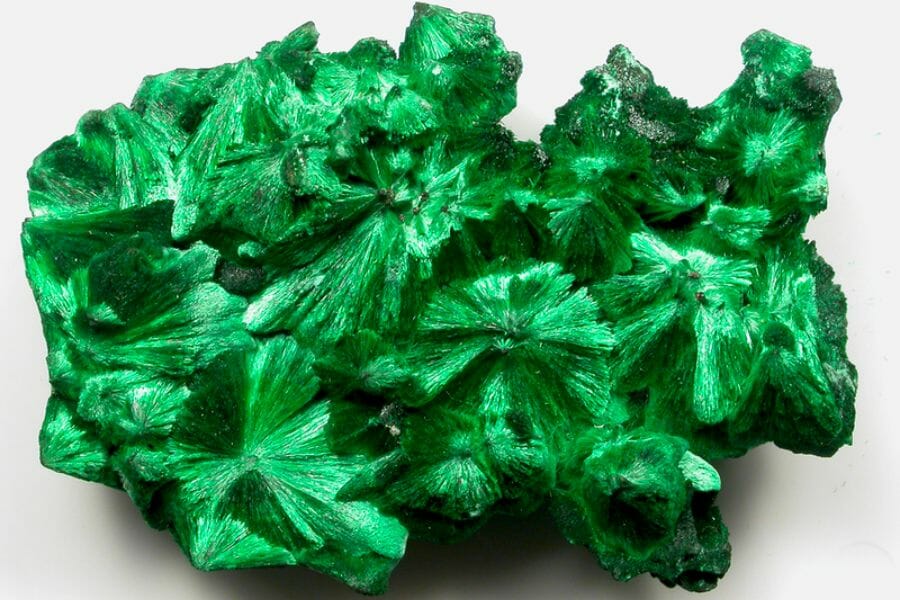
We’ll share with you first our top recommended places to find crystals in Tennessee. Our criterion for selecting them: fun and success at getting our hands on crystals!
Always Confirm Access and Collection Rules!
Before heading out to any of the locations on our list you need to confirm access requirements and collection rules for both public and private locations directly with the location. We haven’t personally verified every location and the access requirements and collection rules often change without notice.
Many of the locations we mention will not allow collecting but are still great places for those who love to find beautiful rocks and minerals in the wild without keeping them. We also can’t guarantee you will find anything in these locations since they are constantly changing.
Always get updated information directly from the source ahead of time to ensure responsible rockhounding. If you want even more current options it’s always a good idea to contact local rock and mineral clubs and groups
Horse Mountain in Silvertooth Agate Fields is Our Favorite Crystal Mine in Pennsylvania
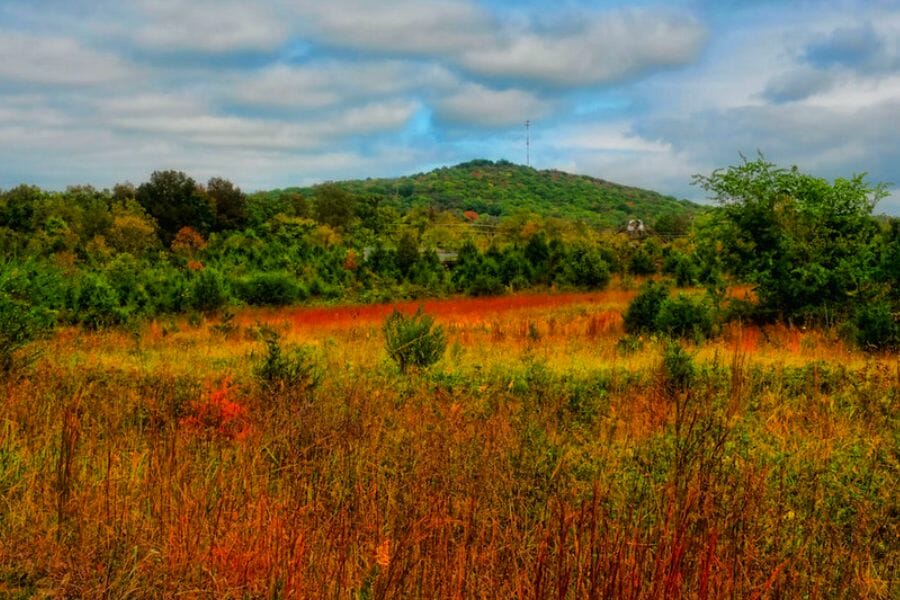
Bedford County, AZ
Horse Mountain in the Silvertooth Agate Fields is a real gem for crystal hunters, it’s even a great place to find gems in Tennesse. The fields were discovered in the 1960s and have been a popular destination for rockhounds ever since. In fact, it was once owned by a famous rockhound named Herschel Silvertooth, hence the name.
The mountain is located in the central part of our stte, near the small town of Altamont. It’s known for its rugged terrain with steep hills and rocky outcrops. The geology of the area is also quite interesting, with layers of sedimentary rock that have been exposed by erosion over time.
Why is this a good place to find crystals? Well, the Horse Mountain in particular is known for its Agates. But don’t be fooled, because Agates are not the only crystals you can find here. There are plenty others! So if you’re planning a trip here, make sure to come prepared because you’ll be in for some adventure.
Where we found crystals at Horse Mountain
If you’re in this place, there’s a high chance you are near crystals already! That’s because you can find them in the different nooks and crannies of this location.

The tools every crystal hunter will need
When you're out looking for crystals having the right tools for the job is very important. You don't need a lot for most trips but there are a handful that are critical and will make your life a lot easier.
We get asked a lot about the equipment we use. Over the years we've found a handful of tools that we recommend to both new and experienced crystal miners which we outline in great detail in our complete rockhounding equipment guide. These are quality options that also happen to be relatively inexpensive.
Below are the basic tools that make your life so much easier and save you a ton of time. Check out the full guide to see everything we recommend bringing. One quick note, as an Amazon Associate I earn from qualifying purchases but we try very hard to only recommend gear we would use ourselves and often recommend brands you can't find on Amazon.
At a minimum you should have:
1 - Sturdy rock hammer: The Estwing Rock Pick is our standard
2 - Rugged chisels: Try Kendo' 3-piece Chisel Set
3 - Compact shovel: The Koleiya 28-inch shovel works well
4 - Rock screen pan: The Wazakura Soil Sieve Set fits the bill
5 - Eye protection: DeWalt Safety Glasses are cheap and comfortable
6 - Head protection: Malta's Safety Helmet has been our go-to
7 - Jewelers lens with at least 20x magnification: Jarlink's Jewelers Loop is perfect
The crystal-finding books that we use most
There are also a few books that have been extremely helpful in the search for gems. These books have great recommendations and tips:
National Audubon Society Field Guide to Rocks and Minerals: North America
Southeast Treasure Hunter's Gem & Mineral Guide
Earth Treasures: The Southeastern Quadrant
We provide links to find these tools on Amazon but some can also be found at your local hardware stores. For more recommendations check out the link to our full tool guide above.
Little Tennessee River
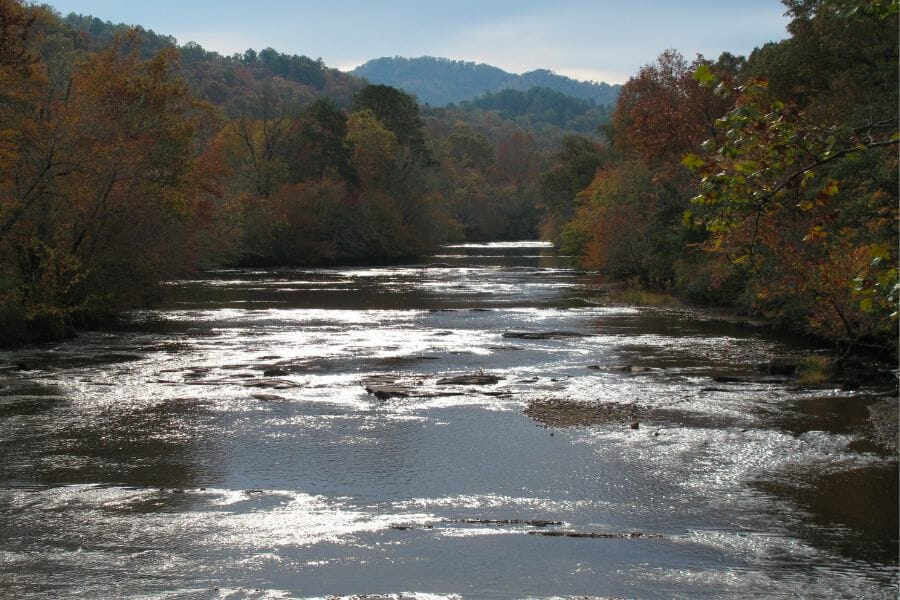
Lenoir City, TN
Little Tennessee River has been an important location for native peoples for thousands of years. The Cherokee, in particular, relied on the river for food, transportation, and trade. Today, it’s still an important part of the local economy and culture.
The river runs through the western part of North Carolina and eastern Tennessee, and is known for its clear, cold water and rocky bottom. The area is quite unique with a mix of ancient rock formations and more recent deposits from the last ice age.
The rocky bottom of the river is a great place to search for a variety of crystals. Many of these have been washed down from the surrounding mountains and deposited here. You can find them by sifting through the sand and gravel on the river bottom or by using a snorkel and mask to search for them underwater.
Where we found crystals at the Little Tennessee River
We had the best luck finding Quartz crystals and other crystals in the red clays of the Little Tennessee River, so we recommend you explore it too. Read more about crystals’ prices in this article.
Cannon County
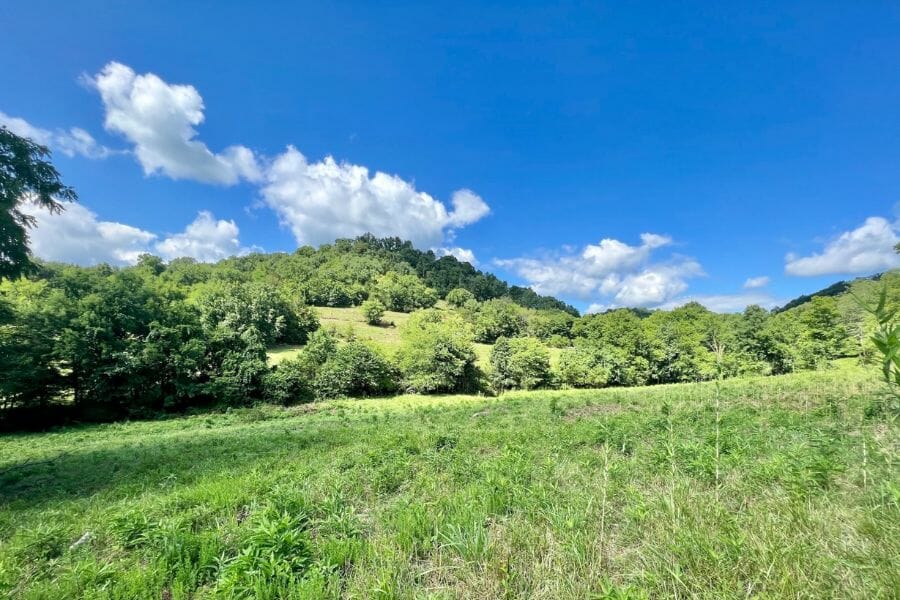
Cannon County, TN
Cannon County was once home to the Native American tribes, including the Cherokee, who used the land for hunting and farming. Located in the central part of our state, it is known for its rolling hills and dense forests.
The county has a mix of limestone, shale, and sandstone formations that have been exposed over time by erosion and weathering. Because of this, it has been known to be rich with different types of crystals that come in a variety of shapes, colors, and sizes.
If you’re planning a trip to Cannon County, you’ll need a rock hammer, chisels, and safety glasses, as well as sturdy shoes and plenty of water. And as always, be respectful of the environment and follow any rules or regulations of the county.
Where we found crystals in Cannon County
If you’re here, then you’re in luck because pretty much the entire county is loaded with crystals! If you want to focus your efforts to find crystals here, you can search in all regional gravels, streams, fields, cliffs and bluffs, road cuts, and quarries for beautiful specimens of crystals like Calcite, Fluorite, Pyrite, and Celestite.
Ben Lomond Mountain
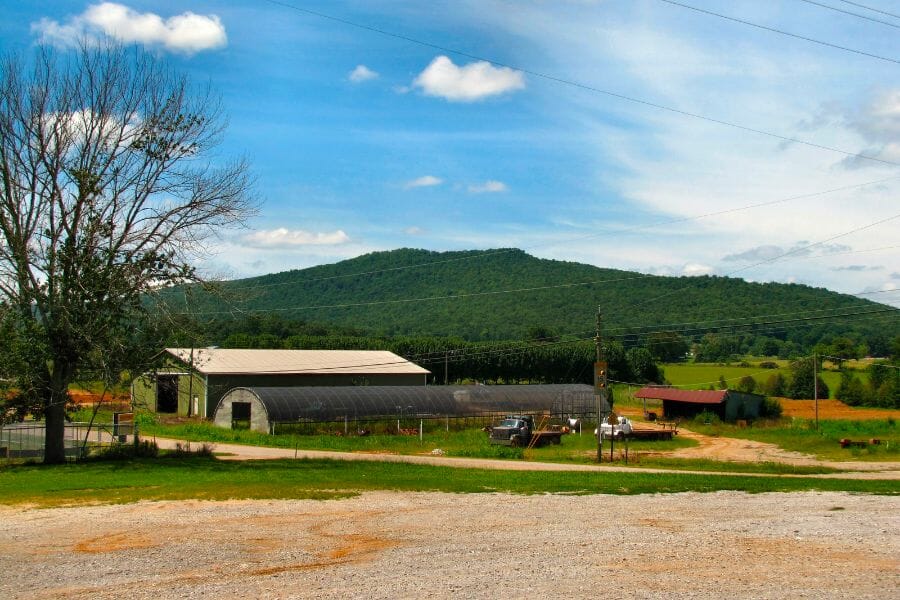
Shellsford Rd. McMinnville TN 37110
Ben Lomond Mountain has been an important location for people in our state for centuries. It was once home to the Cherokee tribe, who used the mountain for hunting and gathering resources. Today, it’s a popular destination for outdoor enthusiasts, including crystal hunters like ourselves!
As part of the Cumberland Plateau, the mountain is known for its rugged terrain, dense forests, and stunning views. Its interesting geology is a mix of sedimentary, metamorphic, and igneous rock formations.
When visiting here, make sure to come prepared with the right equipment and tools. This is not to only ensure your success at finding crystals here, but to also help ensure the sustainability of responsible collecting in this area.
Where we found crystals at Ben Lomond Mountain
If you explore the West slope of Ben Lomond Mountain, you can find stunning samples of Calcite, Celestite, Marcasite, and Pyrite crystals.
Copperhill
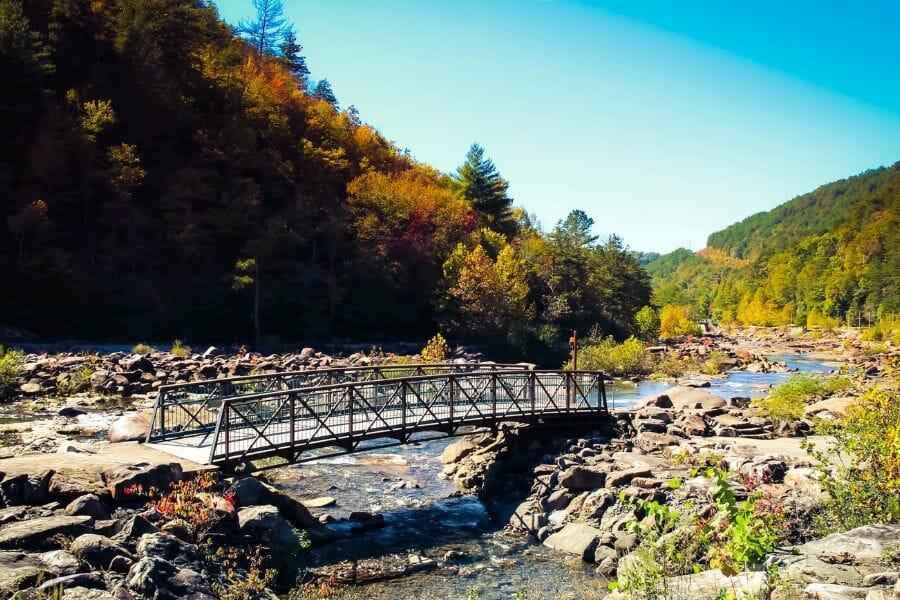
Copperhill, TN
Nestled in the southern part of our state, Copperhill is home to some of the best crystal hunting grounds you’ll ever come across. Copper mining was the main industry in this place for many years, and it’s no surprise that this activity led to the discovery of numerous minerals and crystals in the area. The copper mining operations have since closed down, but the abundance of crystals and minerals remains.
This area is located at the base of the Appalachian Mountains, which have been known to produce some of the most stunning crystals in the world. The mountains themselves are composed of a wide range of minerals.
That being said, Copperhill is undoubtedly a crystal hunter’s paradise!
Where we found crystals at Copperhill
We had the best luck finding beautiful Tennessee crystals at the area stream gravels of this place. When you’re here, you have the chance to get your hands on Azurite, Chalcopyrite, Galena, Garnet, Pyrite, Malachite, and Quartz crystals.
Our Other Favorite Places For Crystal Hunting
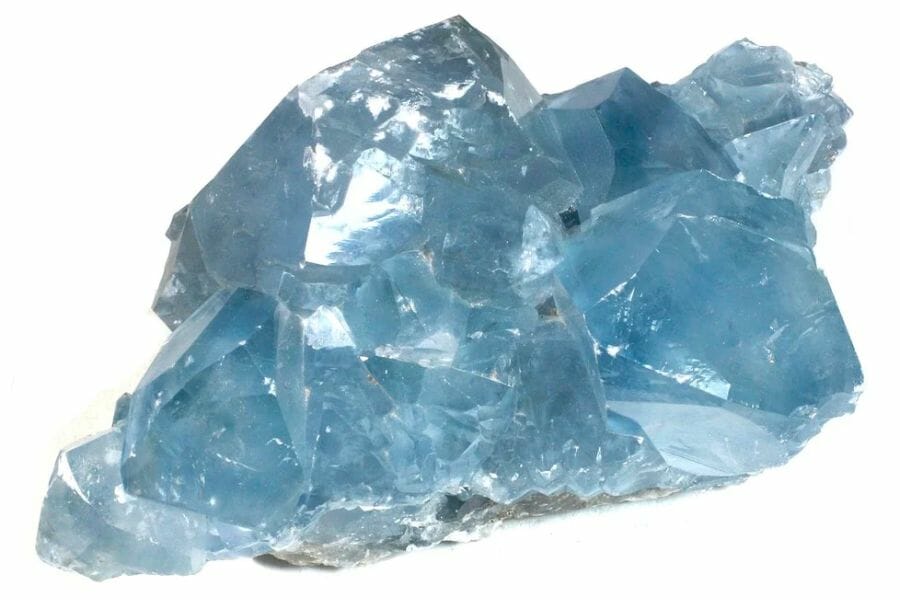
If you’re in for more crystal mining adventure, we have many other recommended places for you. After all, a state as bountiful in natural wonders as ours will not easily run out of areas to explore. In fact, some of these areas are also great for finding Tennessee geodes.
Where you can find crystals for free in Tennessee
In most cases, the best places to search for crystals require some fee. But this is NOT the case always. There are actually a ton of areas that are free to search through. Here are some of them:
| County | Location |
| Bedford | 6 miles east on SR-64 at the Velmer Curvow Farm |
| Blount | In road cuts and stream gravels of Townsend |
| Campbell | Regional road cuts along US 25W to La Follette |
| Fentress | North side of Boles Creek and 1 mile from the church |
| Grundy | South of city in road cuts of Monteagle area |
| Hawkins | County wide in all road, railroad, stream cuts, and also in quarries |
| Overton | A quarry northwest 4 miles near Allons and west of Rte. 52 |
| Putnam | 2 miles on US-70N at abandoned quarry |
| Robertson | Area road cuts and stream gravels |
| Shelby | At Richardson’s landing, area dredging operations, stream gravels and banks |
| Washington | At the Boone Tree Quarry of Johnson City |
| White | At the White Company limestone quarry |
Other great places to dig for crystals
If you have no qualms paying for certain fees to dig for crystals, then here are the great areas that you can visit here. Take note that fees may vary (or may even be waived) depending on the season, so reach out first before heading out to these places.
| County | Location |
| Bradley | Area mines of Cleveland and Mineral Park |
| Clairborne | Lead mine on Lake Norris and area mines of Straight Creek district |
| Cocke | Area mines of Del Rio and at the Gulf Fork Mines |
| Davidson | To the Haysborough lead mine |
| Greene | North 3 miles to ½ miles north of the Moshein-Albany crossroads, then W on gravel road to Gethsemane School, north ½ mile on dirt road to the Brown-Tipton Mine |
| Monroe | East 5 miles, near village of Rocky on road to Vonore, the Bullard Barite Mine |
| Polk | Area mines of Copperhill and Ducktown |
| Sevier | 3.5 miles east at the Nuns Cove mines |
| Smith | At the Elmwood Mine, Foley Mine, and area mines of Trousdale |
| Unicoi | Bumpus Cove area mines |
| Williamson | Nolensville area mines |
The Best Crystal Shops In Tennessee

Finding crystals in their natural environment takes time, energy, and effort that not everybody has. If you’re one of them, your best chance of taking home a crystal from our state is to visit the local crystal shops here. Here are our top recommended stores with an array of beautiful crystals for you to choose from:
- East Nashville Crystal Store – 804 Meridian St, Nashville, TN 37207
- Stonekeepers – 215 Robert Rose Dr e, Murfreesboro, TN 37129
- Cosmic Connections – 2117 8th Ave S, Nashville, TN 37204
- Jae’s Gem Mine – 2416 Music Valley Dr Suite 102, Nashville, TN 37214
- Chattanooga Crystal Store – 1155 E Main St, Chattanooga, TN 37408
- Stone Harmony – 101 E Main St Suite 101, Gallatin, TN 37066
- Southern Crystal Company – 2215b Old Hickory Blvd, Old Hickory, TN 37138
- Sapphire & Sage – 3249 Gallatin Pike, Nashville, TN 37216
- Crystals & Curiosities – 114 Nashville Hwy, Columbia, TN 38401
- Nashville Crystal Store – 2819 Columbine Pl #7, Nashville, TN 37204
Additional places to find crystals in nearby states
If you’ve already tried all of our recommendations above or are planning a trip out of the state, you should check out our guides for neighboring states:
- Crystals in Kentucky
- Crystals in Virginia
- Crystals in North Carolina
- Crystals in Georgia
- Crystals in Alabama
- Crystals in Mississippi
- Crystals in Arkansas
- Crystals in Missouri
If you have any recommendations we haven’t covered, please leave them in the comments below!

